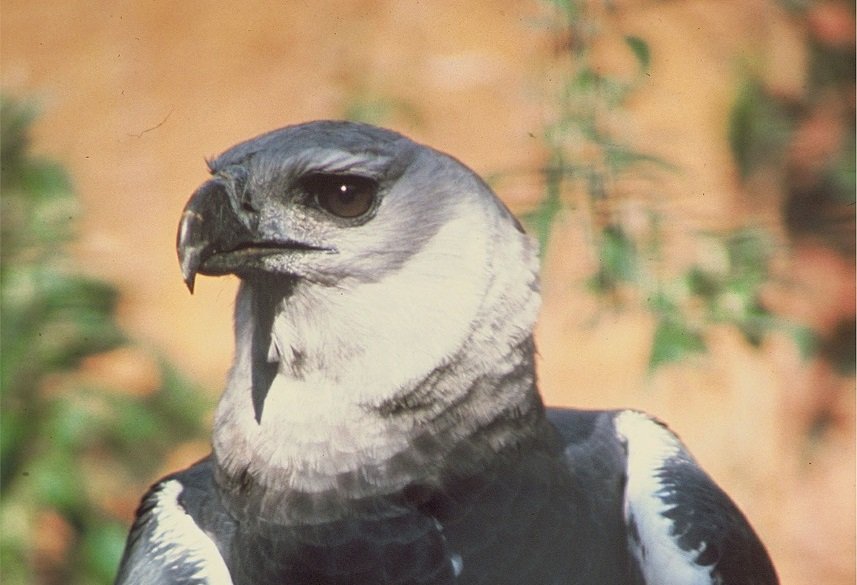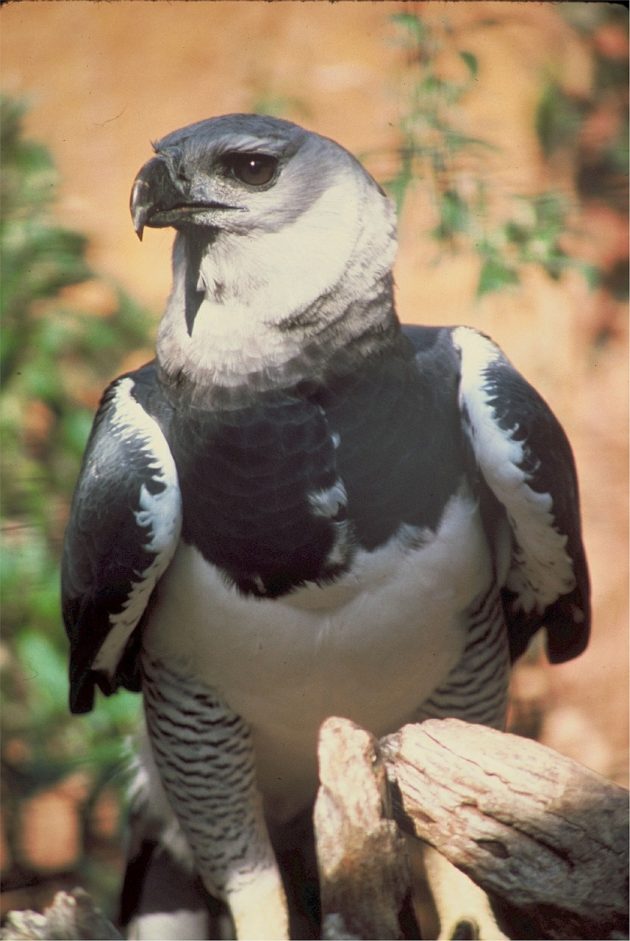
In her book, “On a Wing and a Prayer,“ Sarah Woods describes the bird that captured her interest when she first visited Panama: “At more than one metre tall and able to kill a monkey with a single swipe of its powerful, knife-like talons, [H]arpy [E]agles are incredibly hard to find.”
Many share her fascination with this bird of prey, and it was designated Panama’s official bird in 2002. The name “Harpy Eagle” was coined by South American explorers, and is based on the harpies of Greek Mythology. Interestingly, the eagle featured in Panama’s coat of arms is not the Harpy Eagle, but a representation of an American eagle species, as the United States was the first country to recognize Panama’s independence.
 A Harpy Eagle
A Harpy Eagle
Like Woods, I can’t get over their talons. At 3-4 inches long, they rival those of the great Grizzly Bear, and allow the Harpy Eagles to go after prey unavailable to many other birds. These eagles are known to take down Howler Monkeys, baby deer, and sloths, just to name a few of their favorite meals. Because they like to hunt in the tree canopy, they will also eat “iguanas, parrots, porcupines, coatimundis, and raccoons.”
Panama hosts the largest breeding population of Harpy Eagles, though they were once “found from southern Mexico through Central and South America all the way down to northern Argentina.” While they can live in human-modified environments, they are threatened both by deforestation and hunting, and less than 50,000 remain in the wild. An article by the American Bird Conservancy summarizes the heart-wrenching reason they are sometimes shot: “’I have spoken with hunters who have killed Harpy Eagles out of curiosity,’” commented Bennett Hennessey, who directs ABC’s Brazil Conservation Program. “’Unlike many other large raptors, Harpy Eagles will sit on a perch and allow people to approach them. Unfortunately, they are not afraid of humans, so are easy to kill.’”
If you want to see a Harpy Eagle, your best bet is to follow in the shoes of Sarah Woods and go to Panama. As she puts it, “one of [the Harpy Eagle’s] strongholds is the Darien region of Panama, one of the last great wildernesses of Central America.”













Yes, quite the bird and hard to find. One of the only times I saw this species at close range was while checking out a possible nesting site in Tambopata, Peru. The adults didn’t pay any attention to us and carried branches back and forth while making odd, duck-like sounds. It was the only time I felt an instinctive sense of trepidation about my own survival when looking at a bird. They don’t attack people but no, they sure aren’t afraid of them and if one is shot, it can take a very long time for another bird to occupy that territory. I wish they were bullet proof. They do sort of look like monsters.